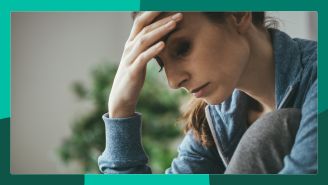Updated on January 7, 2025.
“Deaths of despair” is a phrase used by social scientists. It describes the increase in death rates of low-income, middle-income, and middle-aged people from suicide, drug overdoses, and alcohol-related issues. These deaths are often attributed to a range of complex factors, including unemployment and other hardships that can negatively affect mental well-being.
Though it’s a newer term, “deaths of despair” draws attention to a crisis that’s been observable in the United States since the early 2000s. In more recent years, social upheaval, the COVID pandemic, economic uncertainty, and limited access to affordable health care have contributed to the phenomenon.
- Suicide is a leading cause of death in the United States. In 2022, more than 49,000 people died by suicide, the Centers for Disease Control and Prevention (CDC) reports. It was the second leading cause of death of people between 25 and 34 years old, and the fourth leading cause for people ages 35 to 44.
- Drug overdoses lead to 107,941 deaths in 2022. Overdose deaths are driven primarily by the widespread use of opioids, especially the synthetic opioid fentanyl.
- Alcohol use is related to about 178,000 deaths per year. These include car accidents as well as chronic health conditions related to drinking alcohol, such as liver and heart disease, several types of cancer, and alcohol use disorder.
Here’s what to know about the risk for deaths of despair, how risks have changed over the years, and ways to find help if you or someone you know is in danger.
What are risk factors for deaths of despair?
The risk factors for deaths of despair are complex and not easy to pin down. However, a 2022 scoping review published in the International Journal of Environmental Research and Public Health attempted to do just that. Researchers looked at 21 different studies to determine the main social determinants for deaths of despair, which included:
- Economic conditions: Experiencing income insecurity, financial losses, or an inability to access health insurance, or feeling or perceiving economic hardship
- Occupational reasons: Having a blue-collar job or being out of work
- Education level: Having a lower education level
- Geography: Living in a rural area, especially in southern U.S. states
In addition to the factors named in the study, racial disparities play a major role in deaths of despair. Among other widespread issues, they lead to significant differences in access to mental healthcare and substance abuse treatment programs.
Who is most affected?
Men are more likely to experience deaths of despair than women, which has contributed to a lower life expectancy for men in the U.S. On average, women outlive men by almost six years, according to a 2023 research letter published in JAMA Internal Medicine.
The term “deaths of despair” used in a statistical context was first coined in a 2015 article published in the journal PNAS. At that time, the research had found that white, middle-aged men in America were most affected, as well as those who had less education. This group experienced higher rates of death from opioids and other drug addictions, chronic pain, alcohol, and suicide.
Things have changed, however. A 2024 analysis in JAMA Psychiatry examined deaths of despair trends between 1999 and 2022, focusing on people ages 45 to 54 years old. In 2013, the rate was twice as high for white people than it was for Black people. But by 2022, deaths of despair affected Black people at higher rates than white people.
What’s more, researchers found that American Indian and Alaska Native people had the highest rates of deaths of despair every single year between 1999 and 2022. They hadn’t been counted in the original 2015 dataset, which centered on the plight of white men.
The overall number of deaths of despair had also risen dramatically by 2022.
Effects of COVID on deaths of despair
The pandemic added to this burden. Deaths from alcohol and drugs in particular rose dramatically in the U.S. between 2019 and 2021. In fact, a 2023 study published in the International Journal for Equity in Health found that COVID caused 350,831 deaths in 2020, while there were 178,598 deaths of despair.
Why? It’s likely, as people were forced into various degrees of social isolation during lockdowns, isolation took a serious emotional toll. In addition to financial fears, health anxieties, and uncertainty about the future, many experienced “touch deprivation” or “touch starvation,” which may have curtailed their oxytocin levels.
Dubbed the “love hormone,” oxytocin is an important neurotransmitter, or chemical messenger, in the brain. It’s involved in human bonding—between mothers and infants, couples, and other social connections. Researchers have long investigated the role of oxytocin in stress relief, building trust, and easing anxiety.
Touching and hugging can help stimulate the release of this chemical, Asim A. Shah, MD, chief of psychiatry at Houston’s Ben Taub Hospital and professor and executive vice chair of the Menninger department of psychiatry at Baylor College of Medicine. points out. “Some oxytocin is even secreted when we shake hands,” he says.
When people had to practice social distancing, that release of oxytocin was diminished, which may have contributed to feelings of sadness and depression. These effects were compounded by spending a lot more time at home and not being able to engage in certain activities or, in some cases, even see family or friends.
Strategies for staying connected
After the pandemic—just as before the pandemic—many people have continued to struggle with isolation and loneliness. Socializing is crucial to help curb depression and avoid deaths of despair, says Dr. Shah. Here are some ways to stay connected with others and ease loneliness.
Reach out to friends and family
Visit, invite people over, arrange activities to do together, or call others on the phone or on video conferencing platforms. Even when it occurs via technology, seeing or hearing others can release oxytocin and improve mood, says Shah.
Take comfort in a pet
Another way to raise oxytocin is to cuddle up with your cat or pet your dog. “Having pets is protective,” Shah says. Touching a pet can release the same amount of the hormone as hugging a friend, he points out, noting that he’s seen plenty of depressed and even suicidal patients who persevere out of devotion to their animals. “Pets really help people who are lonely,” Shah adds.
Seek professional support
Mental health concerns, including anxiety and depression, may be treatable with medication, talk or behavioral therapy, or a combination of the two. If you or someone you care about would prefer to receive counseling at home, take advantage of telemedicine.
Be aware of those at higher risk
Maintaining regular contact with friends and family members at high risk for depression or self-harm is paramount, particularly those who are older or have pre-existing mental health issues or substance abuse problems, Shah advises.
Know when to seek immediate help
Red flags that someone may be suicidal and in need of immediate help may include:
- Talking about wanting to die, or about feeling empty, hopeless, or trapped
- Feeling intense emotional or physical pain
- Talking about being a burden
- Talking about death often
- Isolating from their social support network
- Giving away prized possessions
- Saying goodbye to loved ones
- Making a will or taking other end-of-life steps
- Engaging in physically risky behavior
But even more subtle changes in someone's personality, behavior, or how they express their emotions could be a warning sign. If you believe that you or someone you know is at risk for suicide, trust your instincts.
Don’t be afraid to ask direct questions, such as “Are you thinking about hurting yourself or dying?” Having this candid talk won’t make someone more likely to take their own life. It could actually have the opposite effect. Giving people the opportunity to open up about their feelings may reduce the likelihood that they act on suicidal thoughts.
People considering suicide can call, text, or chat 988. This nationwide suicide and crisis lifeline is similar to 911 for emergencies, or 311 for city information and service. Live counselors are available to speak 24/7.
Alternatively, they can reach out to the Crisis Text Line by sending a text message to 741741 from anywhere in the United States. Within an average of five minutes, they will be connected with a live, trained volunteer who will listen to their concerns without judgment.
The CDC also provides a number of additional crisis resources to the public.
If you’re with someone who is actively considering suicide, do not leave that person alone. Call 911 right away or go to the nearest emergency room.







